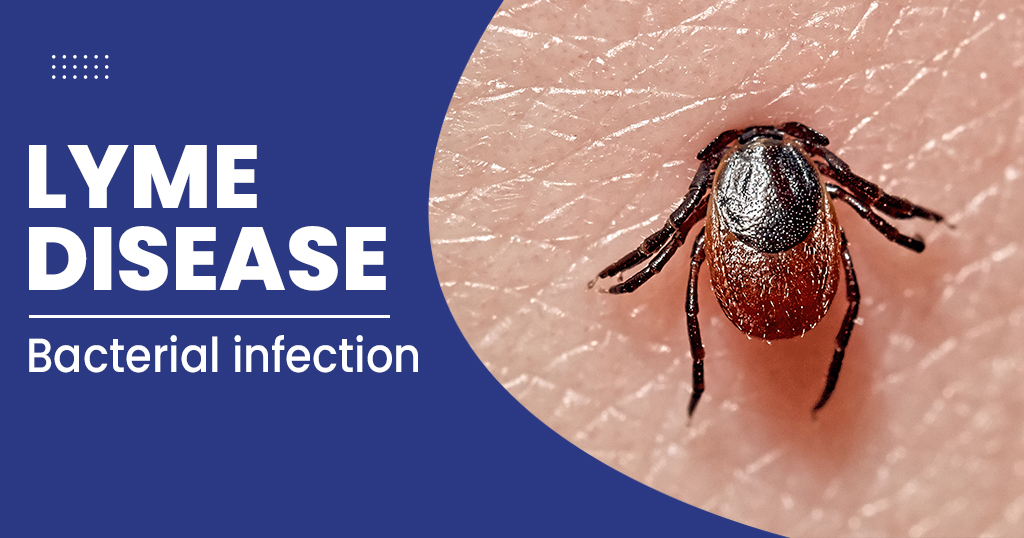Free Courses Sale ends Soon, Get It Now


Free Courses Sale ends Soon, Get It Now



Copyright infringement not intended
Picture Courtesy: www.starhealth.in
Context: The US health regulator did not find any misconduct at clinical sites managed by Care Access for Pfizer and Valneva's trial of a Lyme disease vaccine candidate.
About Lyme disease
|
Causes |
●Lyme disease is caused by the bacterium ‘Borrelia burgdorferi’, which is transmitted to humans through the bite of infected black-legged ticks (also known as deer ticks). These ticks become infected after feeding on infected birds, deer, or mice. ●The transmission occurs when an infected tick remains attached to the skin for approximately 36 to 48 hours. |
|
Symptoms |
●Symptoms of Lyme disease can vary widely and often occur in stages. In the early localized stage, which typically starts 3 to 30 days after the tick bite, a distinctive circular rash known as erythema migrans appears. Other symptoms in this stage include fever, chills, fatigue, headache, muscle aches, and swollen lymph nodes. ●In the early disseminated stage, which can occur months after the bite, symptoms may include multiple rashes, disturbances in heart rhythm (Lyme carditis), and neurologic conditions like facial numbness and meningitis. In the late disseminated stage, arthritis of large joints and brain disorders such as encephalopathy can occur. |
|
Diagnosis |
●Diagnosis involves reviewing the patient's health history and performing a physical exam. ●A blood test is commonly used, starting with an enzyme-linked immunosorbent assay (ELISA) to detect antibodies against ‘B. burgdorferi’. A positive ELISA result is confirmed with a Western blot test, which checks for specific antibodies to the bacterium. ●Polymerase chain reaction (PCR) testing may be used in cases of persistent Lyme arthritis or nervous system symptoms. |
|
Treatment |
●Early localized Lyme disease is typically treated with a 10- to 14-day course of oral antibiotics like doxycycline, amoxicillin, or cefuroxime. ●In cases with cardiac or central nervous system involvement, intravenous (IV) antibiotics may be necessary. Late-stage symptoms, including Lyme arthritis, are treated with oral antibiotics for about 28 days. If treated promptly, most people recover fully. |
|
Complications |
●If not treated promptly or if the infection is not fully eradicated, Lyme disease can lead to complications such as post-Lyme disease syndrome. This syndrome can cause persistent symptoms like fatigue, joint pain, and difficulty concentrating. In some cases, Lyme disease can lead to long-term joint inflammation (Lyme arthritis) or neurological issues. |
|
Prevention |
●Preventing Lyme disease involves minimizing exposure to ticks. This can be achieved by wearing long-sleeved shirts and long pants, using insect repellents, avoiding tick-infested areas, and conducting tick checks after spending time outdoors. Creating a tick-unfriendly environment in the yard, using tick control products on pets, and showering promptly after outdoor activities can also reduce the risk. |
|
Transmission and Living with Lyme Disease |
●Lyme disease is not spread from person to person. Infected ticks must attach to the skin and feed for an extended period to transmit the bacterium. After treatment, it may take weeks or months for symptoms to fully disappear. During recovery, individuals are advised to maintain a healthy lifestyle, eat nutritious foods, rest, and manage stress. |
Conclusion
|
PRACTICE QUESTION Q. Consider the following statements in the context of Lyme disease: 1. It is caused by the Virus ‘Borrelia burgdorferi’, which is transmitted to humans through the bite of infected black-legged ticks (also known as deer ticks). 2. The diagnosis involves the ELISA test. 3. Lyme disease spreads from person to person. How many of the above statements is/are incorrect? A. Only one B. Only two C. All three D. None Answer: B Explanation: Statement 1 is Incorrect: Lyme disease is caused by the bacterium ‘Borrelia burgdorferi’, not a virus. It is transmitted to humans through the bite of infected black-legged ticks. Statement 2 Correct: The diagnosis of Lyme disease often involves the ELISA test, which is used to detect antibodies against ‘Borrelia burgdorferi’. This statement is correct. Statement 3 Incorrect: Lyme disease is not spread from person to person. It is transmitted to humans through the bite of infected ticks. |
© 2024 iasgyan. All right reserved